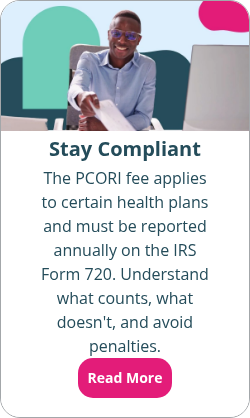What is a special enrollment period?
By Holly Bengfort on July 11, 2025 at 2:30 AM
When it comes to individual health insurance, you typically have one small window of time to sign up. The Open Enrollment period runs from November 1 through January 15 in most states. It's the designated time of year for Americans to make changes to their current policies or enroll for the first time in individual marketplace coverage.
This set time frame keeps people from signing up for an insurance plan only after they get sick or injured. However, if life takes an unexpected turn, you may qualify for an enrollment exception. For example, you’re eligible for a special enrollment period (SEP) if you age out of a parent's plan or have a baby.
In this article, we'll explain what an SEP is, what life events qualify you for one, and what to do once you qualify.
In this blog post, you'll learn:
- The qualifying events for an SEP.
- How much time you have to sign up for health insurance during an SEP.
- The additional SEP that exists for low-income households.
Open Enrollment for health insurance
It's important to know what the Open Enrollment calendar looks like so you're not caught off guard when it comes to your coverage. By being aware of these important dates, you'll know when you'll be able to freely enroll in or change your health insurance policy. If Open Enrollment ends before you can make your adjustments, you’ll be unable to make changes unless you qualify for an SEP.
It's important to note that the Open Enrollment period defined above typically only applies to individuals who are trying to enroll in an individual marketplace policy. If you're covered by an employer-sponsored group plan or Medicare, your Open Enrollment period may vary.
Here's a breakdown of the important dates for Open Enrollment:
- November 1: This is when Open Enrollment starts for health coverage for the next plan year in most states. This is when you can enroll in, re-enroll in, or change your health plan selection through the federal Health Insurance Marketplace.
- December 15: This is the last day you can enroll in or change plans for your coverage to start on January 1. Open Enrollment also ends in Idaho on this date.
- January 15: This is when Open Enrollment officially ends for most states, though some extend Open Enrollment through the end of the month.
- February 1: Coverage starts for those who enroll in or change plans from December 16 through January 15 and pay their first monthly premium.
Due to a new final rule, the annual Open Enrollment Period will begin on November 1 and end on December 15 for all states with public exchanges operating on the federal Health Insurance Marketplace1. This new timeline will become effective for the 2026 Open Enrollment Period for coverage beginning January 1, 2027.
How a special enrollment period works
It takes a major life change to qualify for an SEP. This is when you can make changes to your health insurance plan even though it's not an Open Enrollment period as defined by the Affordable Care Act (ACA). Keep in mind that if you qualify for Medicaid or the Children's Health Insurance Program (CHIP), you're eligible to enroll at any point in the year.
Certain qualifying events and exceptional circumstances will activate an SEP, allowing you to change your health coverage for a certain period following the triggering event. Generally speaking, you'll have a 60-day special enrollment period after the event to enroll in a new health plan through federal or state-based marketplaces.
If you don't make the necessary changes to your health insurance during the SEP, you may have a coverage gap or have to wait until the next Open Enrollment period for the following health plan coverage year.
How to qualify for an SEP
To qualify for an SEP, you need to have a qualifying life event occur.
There are four basic types of qualifying events:
- Loss of health coverage
- Offer of a new health benefit
- Changes in household
- Changes in residence
Loss of coverage
This includes losing employer-sponsored coverage, student health plan coverage, and eligibility for Medicaid or CHIP. Aging out of your parents' plan also counts as losing health insurance. You'll lose your dependent status and access to your parents' plan when you turn 26. If your current insurance coverage or individual market plan no longer exists, you also fall under this qualifying life event.
It's important to note that voluntary cancellation of coverage doesn't count as a qualifying life event.
Offer of a new health benefit
If your employer offers a new health benefit, the marketplaces consider it a qualifying event.
For example, suppose your employer offers you a health reimbursement arrangement (HRA) for the first time, such as the qualified small employer HRA (QSEHRA) or individual coverage HRA (ICHRA). In this case, you can enroll in marketplace coverage within 60 days.
Changes in household
The marketplaces accept several scenarios under this qualifying event.
You may qualify for an SEP if you're:
- Getting married
- Having a baby
- Adopting a child
- Placing a child in foster care
This life change event also applies to people who got divorced or went through legal separation and lost their current coverage. If someone in your family died and you lost health insurance coverage as a result, that would also count as a change in the household. Remember, situations involving a domestic partnership vary from state to state.
Changes in residence
Most forms of relocation count as a qualifying life event. If you're moving to a new ZIP code, or to the United States from another country or a U.S. territory, you can enroll in or change your health coverage if you enter a new rating area.
Moving within the same rating area typically won’t create a SEP. This also covers students who move to or from where they attend school. Seasonal workers also fall under this category if they move to or from the place where they live and work. Keep in mind that moving for medical treatment options doesn't qualify you for an SEP.
Additional qualifying changes for an SEP
Other circumstances that allow you to change your health coverage include experiencing an enrollment or policy information display error, gaining or becoming a dependent due to child support, or getting an SEP appeal decision that's in your favor.
Survivors of domestic abuse are also eligible for an SEP to enroll in a health plan that's separate from their abuser. Those who leave incarceration may also become eligible for an SEP.
Additionally, you'll qualify if you:
- Gain membership in a federally recognized tribe
- Become an Alaska Native Claims Settlement Act (ANCSA) Corporation shareholder
- Begin or end service with AmeriCorps State, AmeriCorps National, VISTA, or NCCC
You could also qualify for an SEP if you previously qualified in the previous 60 days but missed your enrollment deadline for health plan coverage due to a natural disaster or a national or state-level emergency2.
Finally, you may become eligible for an SEP if you participate in an employer-funded group health plan and it either becomes unaffordable or stops providing minimum value (MV). However, you must be able to drop your employer-sponsored coverage to take advantage of the SEP.
Your group plan is unaffordable if you must pay more than 9.96% of your household income in 2026 for monthly premium payments.
Special enrollment for families with a low household income
DISCLAIMER: Under a new final rule, the Trump administration's One Big Beautiful Bill Act (OBBBA) will eliminate the low-income SEP effective January 1, 20265.
For people who may be struggling financially, the low-income SEP gives them access to affordable health coverage outside of the normal open enrollment period.
In September 2021, the U.S. Department of Health & Human Services (HHS) established this SEP for households with an annual income of less than 150% of the federal poverty level (FPL), as long as the applicant is also eligible for premium tax credits that cover the cost of a benchmark plan.
The SEP was specifically created to make it easier for low-income Americans to enroll in ACA-compliant plan coverage throughout the year instead of just during open enrollment or when they experience a qualifying life event. This allows them to carefully consider their choices or seek assistance in finding a suitable, qualified health plan.
According to HealthInsurance.org, if you're a single person who's enrolling for coverage in 2025, an income of no more than $22,590 amounts to 150% of the poverty level. It's $54,870 for a household of five people3.
If you're not sure if you're eligible, there are several online tools available to help you calculate whether or not you qualify for premium tax credits, and in turn, qualify for the low-income SEP. KFF's Health Insurance Marketplace Calculator is one option4.
What to do if you qualify for an SEP
If you've experienced one of the qualifying events listed above, you're ready to apply for an SEP. You can do this either through HealthCare.gov6 or your state exchange7.
Your application will differ depending on whether you've experienced a qualifying life event or had another special circumstance that will affect your health coverage.
If you've experienced a qualifying life event, you can apply online. You can check to see if your life event qualifies by going to HealthCare.gov and answering a few screening questions to see if you qualify for an SEP8.
If you have a special circumstance rather than a qualifying life event, you'll want to contact the marketplace coverage call center directly at 1-800-318-2596. A representative will ask a few questions about your situation to help decide if you're eligible for an SEP.
What to do if your request for an SEP is denied
If you believe that you should qualify for an SEP, but your request is denied, you can submit an appeal. You have 90 days to ask for an appeal. Even if you miss the 90-day timeframe, don't lose hope. There's a chance you could get an extension. When filing your appeal, you should explain why you missed the enrollment deadline.
Conclusion
While the annual open enrollment period is the best time to enroll in individual health insurance, life’s unexpected twists may require other solutions. A special enrollment period (SEP) is available to ensure your health insurance remains uninterrupted during unforeseen circumstances.
This blog article was originally published on August 1, 2019. It was last updated on July 21, 2025.
- CMS takes aim to reduce improper enrollments
- Special Enrollment Periods for complex issues
- An SEP if your income doesn’t exceed 150% of the federal poverty level
- Health Insurance Marketplace Calculator
- Patient Protection and Affordable Care Act; Marketplace Integrity and Affordability
- Health Insurance Marketplace
- The Marketplace in your state
- Find out if you can get health coverage now
Check out more resources
See these related articles

A state-by-state guide to extended open enrollment periods
Did your state extend the annual open enrollment period? Find out in this comprehensive guide detailing the extended open enrollment periods across all states.

What happens if you miss Open Enrollment for individual health insurance?
Missed Open Enrollment for health insurance? Find out what options you have, including qualifying life events and special enrollment periods (SEPs).

ACA Special Enrollment Periods [Chart]
ACA Special Enrollment Periods Chart, by qualifying events. Chart of special enrollment periods for marketplace and non-marketplace plans.



